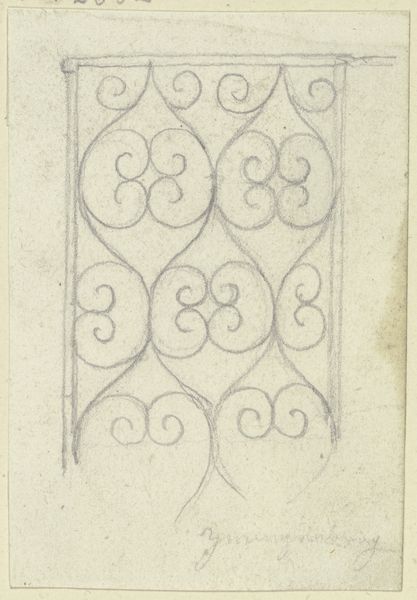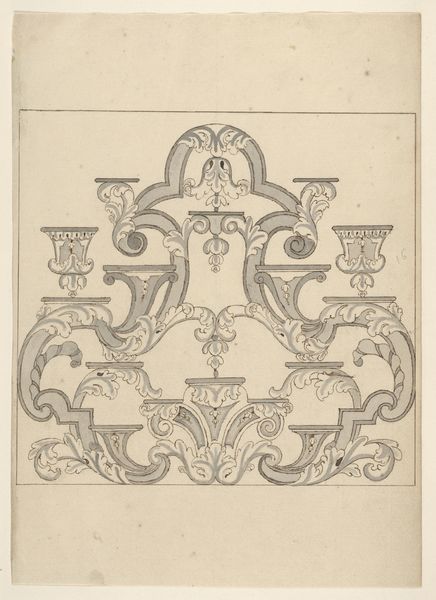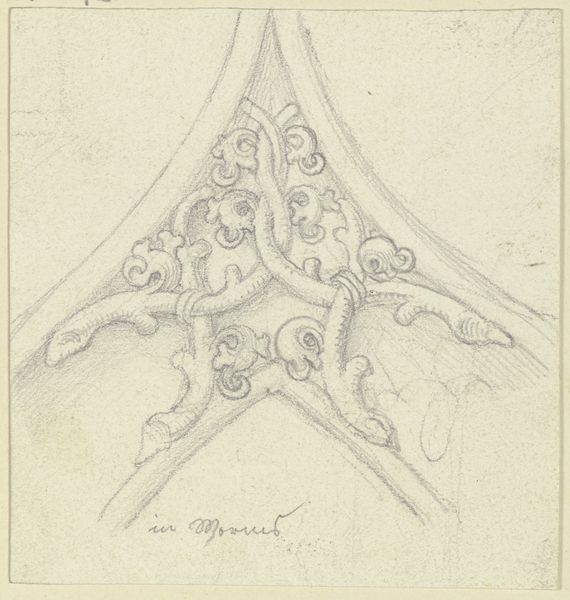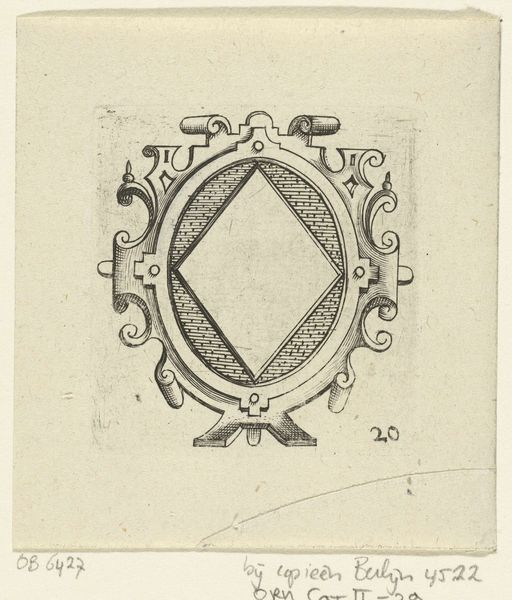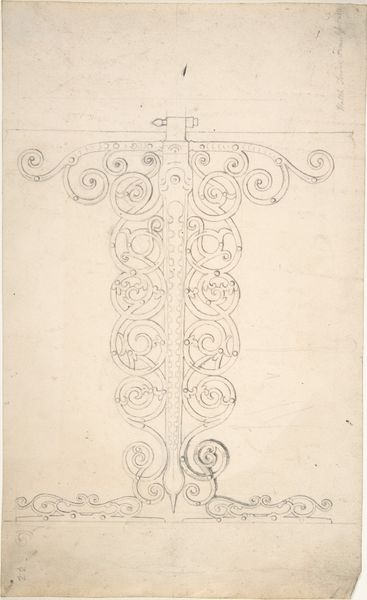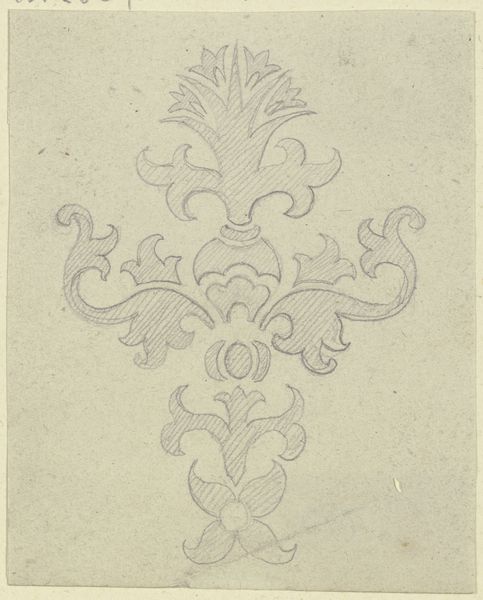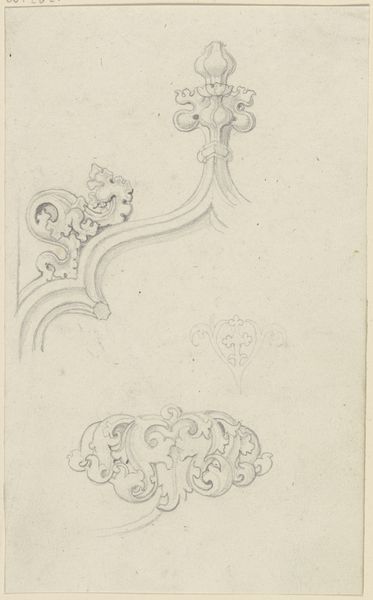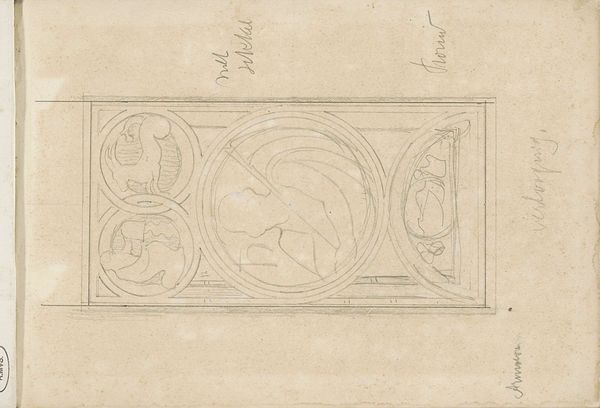
drawing, architecture
#
drawing
#
medieval
#
form
#
geometric
#
architecture
Copyright: Public Domain
Curator: We're looking at "Section of a parapet" by Karl Ballenberger, housed here at the Städel Museum. It's a drawing, seemingly in pencil, depicting architectural details. Editor: It has such an understated beauty. The pale lines barely there, a quiet study in form. Gives me a feeling of reverence, almost like viewing a sacred text, doesn’t it? Curator: I think that reverence comes from its utility, though. This isn't just "art" for art's sake. It shows us part of the St. Martin church parapet in Landshut and hints at medieval stone carving techniques and how builders conveyed their design and structural ideas to the masons who would later cut this shape from stone and install it perhaps many feet off the ground. Editor: Yes! It also speaks of the labour involved. We think of "medieval" and imagine rough work, unskilled hands. But the planning, the precision...the creation of this architectural pattern on a parapet reveals the opposite. The drawing serves a purpose and holds all of the necessary dimensions, angles, and geometries to communicate complex fabrication constraints for the master carver. Curator: Absolutely. Think about how this geometric repetition is applied across this entire surface of this church, acting like modules fitted in series—it’s quite beautiful! Each repeated element might suggest the social patterns and divisions, or also speak of consumption because of its industrial design that relies on geometric patterns. Editor: There's also something about the act of drawing itself—laying ideas on paper before committing them to something more permanent. We could speculate, or perhaps this very page holds information about Ballenberger’s design thoughts! Curator: I agree; the form certainly directs the medieval feeling, yet the material essence conveys something deeply resonant: a study and love of how humans build our world and reflect something beyond ourselves in stone, drawings, etc. Editor: Ultimately, viewing it through the lens of process transforms how one experiences the aesthetic quality itself. Curator: True. For me, the drawing feels both ancient and utterly modern—an echo of artistic and industrial methods that never vanish completely, shifting shape across millennia!
Comments
No comments
Be the first to comment and join the conversation on the ultimate creative platform.
